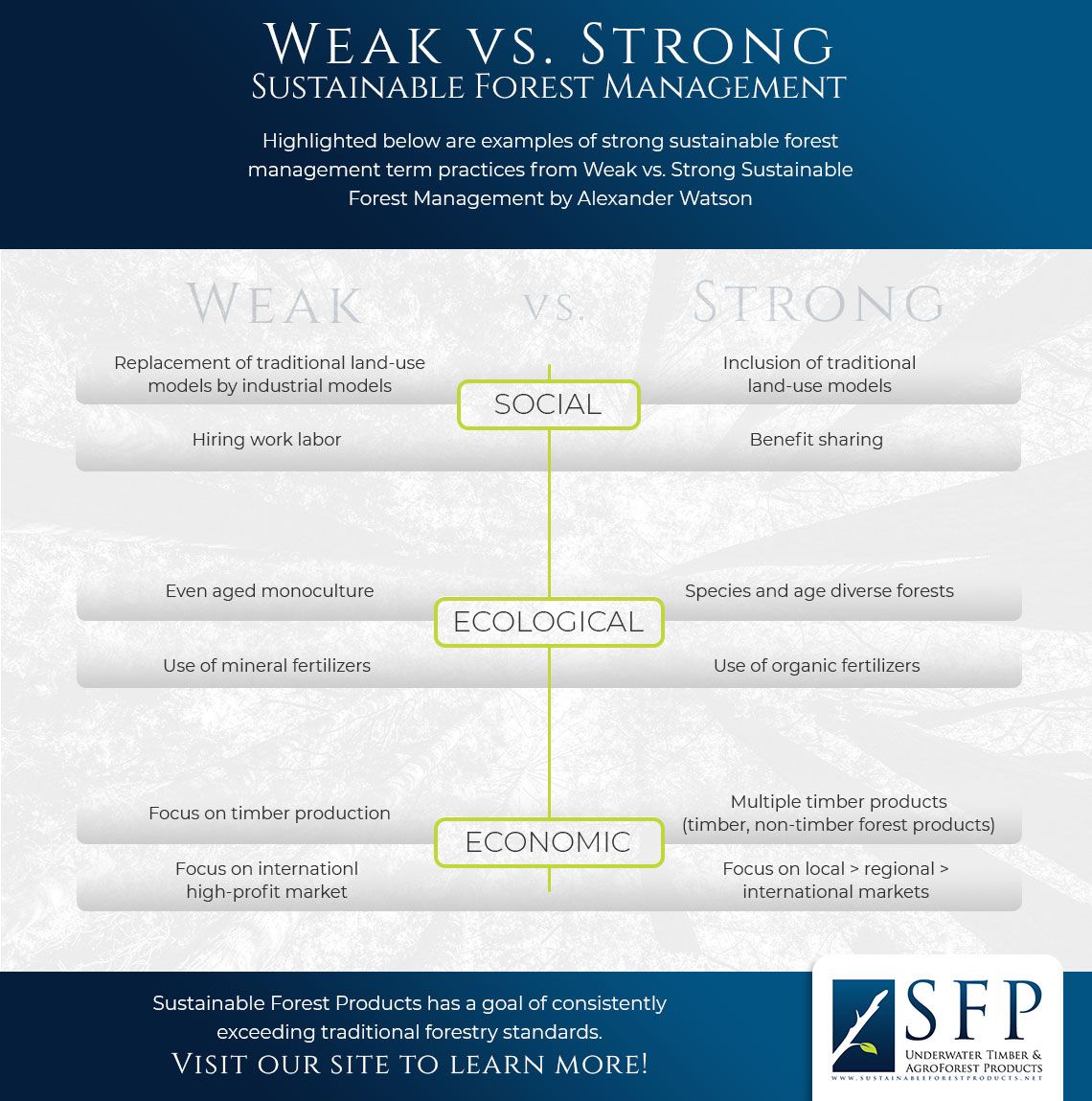
The Difference Between Weak and Strong Sustainable Forest Management

What is Weak and Strong Sustainability?
Chances are pretty good that you’ve been hearing the word “sustainable” used a lot lately, whether in fashion, home goods, or efforts to change the human-nature dynamic. You may also have a good idea of what it means, but before diving into the blog, we are going to take a good look at a few definitions from an article about Weak and Strong Sustainability, and why you need to know the difference.
Weak sustainability is an idea held within environmental economics, which states that ‘human capital’ can substitute ‘natural capital,’ which means that mad-made power and technology can replace and function as the natural resources we rely on. Strong sustainability, on the other hand, assumes that ‘human capital’ and ‘natural capital’ are complementary, but not interchangeable.
Human capital and natural capital
Human capital is produced resources such as infrastructure, labor, and knowledge. Natural capital is characterized by environmental assets like fossil fuels, biodiversity, and other ecosystem structures and functions that are relevant to the success of the environment as well as the success of humankind.
In weak sustainability, natural resources decline as long as human capital is increased. To visualize this, think about the degradation of the ozone layer, tropical forests, and coral reefs, as well as mining coal for the production of electricity.
Strong sustainability makes the assumption that the economic and environmental capital is complimentary, but not interchangeable, meaning they both must flourish together. The term accepts that there are certain functions that environmental performance that cannot be duplicated by humans or human-made capital, much like the ozone layer, which cannot be duplicated with current man-made technology.
Strong sustainability emphasizes “ecological scale over economic gains, implying that nature has a right to exist and that it has been borrowed, and should be passed on from one generation to the next, still intact in its original form.”
Strong Sustainable Forest Management
As Ott & Döring (2004) state in their Constant Natural Capital Rule, in a strong sustainable forest resources management, forest ecosystems have to be treated in a way in which their qualitative and quantitative characteristics remain constant for generations to come. Weak sustainable resource management, on the other hand, is characterized by wooden forest products being replaced by other materials, like plastics and carbon emissions due to deforestation of natural forests.
Highlighted below are examples of strong sustainable forest management term practices from Weak vs. Strong Sustainable Forest Management by Alexander Watson. The terms on the left side may be used to describe conventional or weak sustainable forest management, and on the right side you’ll find the term that best describes strong forest resource management:
Where Does Sustainable Forest Products Come In?
Sustainable Forest Products is a global leader in water woods; old-growth timbers that have been submerged and preserved underwater for potentially hundreds of years. Water wood from Sustainable Forest Products are ethically sourced through ethical labor. Instead of cutting down living and growing trees in rainforests using cheap labor, they harvest wood that has long been dead, but maintained underwater. They are invested in social impact projects and are dedicated to the agroforestry industry.
Exotic water wood can be used in various types of projects, from decks and floors to furniture and even buildings. Recovered water wood can be used in any way that other wood can, but it provides aesthetically appealing texture and grains that other types of wood simply cannot compare to.
Take a look at our site to learn more about us and our mission, and shop exotic, recovered water wood now.
